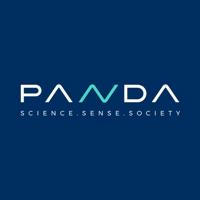"MEDIA LITERACY" IS BEING USED AS A COVER FOR CENSORSHIP
Excerpt from https://pandata.org/post-twitter-files-part-media-literacy-and-funding/
Many fact check platforms offer media literacy and fact-checking courses: their main targets are children, students and journalists, although courses may be offered more widely. For example, Logically and NewsMobile joined forces with Facebook to offer a media literacy programme in India in 2021. Africa Check, its main funders being Meta, Bill & Melinda Gates Foundation and Google, trained 4,500 journalists in fact-checking; operates a media literacy programme in schools; and trained over 10,000 people in media literacy.
Encouraging audiences to think critically, understand nuances and potential inaccuracies, and to avoid online scams and dangers is commendable, but courses on offer have a narrow focus. For example, a media literacy course for seniors, funded by Meta and operated by MediaWise, limits trustworthy sources to organisations such as mainstream media, Wikipedia, WHO and the CDC. The course facilitators claim that those who spread other narratives, described as ‘misinformation’ or ‘disinformation’, are doing this for financial gain such as advertising revenue and clickbait, or they may be linked to foreign or harmful sources. This and other courses, such as AFP’s fact checking courses for journalists, advise the importance of checking out the source by up-reading (finding out where the information came from) or lateral reading (checking what other sources say about the author or the website/news site). This is problematic because when checking out dissenting voices, despite having appropriate qualifications or experience to join the debate, they are often smeared on internet websites. Being able to listen to a variety of thoughtful and educated views on science, health and other issues should be normal in a free society, without prior judgement of credibility.
For example, an AFP course for journalists entitled “Identify trustworthy sources on health topics and evaluate studies” gives useful detail on analysing academic papers, but emphasises the trustworthiness of a small number of elite medical journals and peer review. However, AFP does not acknowledge the influence of pharmaceutical companies and questions of possible bias in medical journals and peer review, as described by retired editors of both the British Medical Journal and the New England Journal of Medicine. Many academics have seen this trend significantly worsen since 2020, whilst issues of flawed data in peer reviewed and published papers that support official narratives are sometimes ignored. Hence journalists cannot rely on medical journals nor even peer review when investigating health issues, and “trustworthy sources” identified by AFP do not give a full picture of the range of useful academic opinions.

